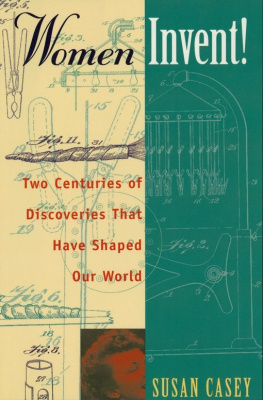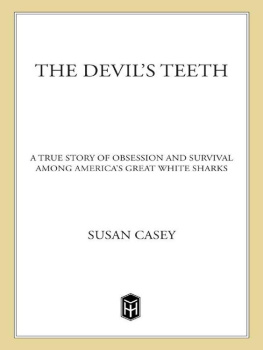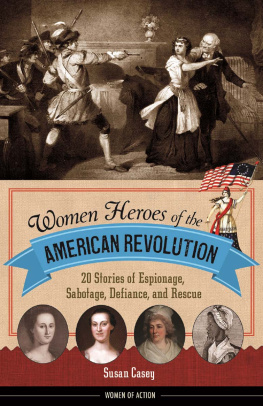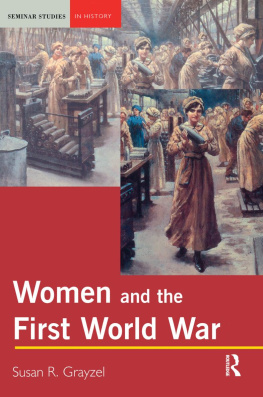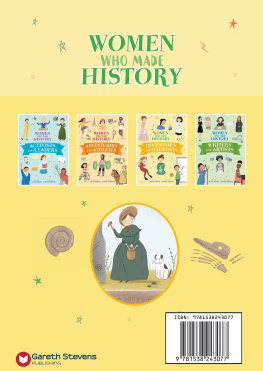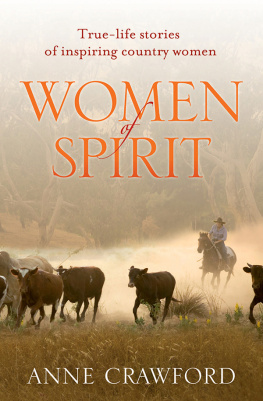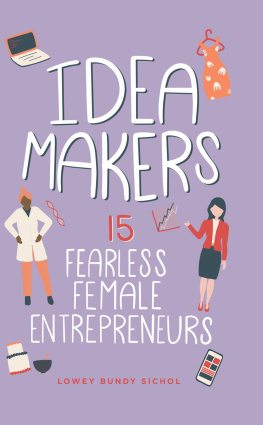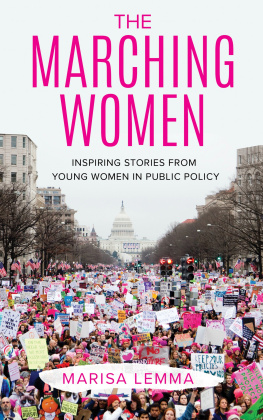Susan Casey - Women Invent!. Two Centuries of Discoveries That Have Shaped Our World
Here you can read online Susan Casey - Women Invent!. Two Centuries of Discoveries That Have Shaped Our World full text of the book (entire story) in english for free. Download pdf and epub, get meaning, cover and reviews about this ebook. year: 1997, publisher: Independent Publishers Group;Chicago Review Press, genre: Non-fiction. Description of the work, (preface) as well as reviews are available. Best literature library LitArk.com created for fans of good reading and offers a wide selection of genres:
Romance novel
Science fiction
Adventure
Detective
Science
History
Home and family
Prose
Art
Politics
Computer
Non-fiction
Religion
Business
Children
Humor
Choose a favorite category and find really read worthwhile books. Enjoy immersion in the world of imagination, feel the emotions of the characters or learn something new for yourself, make an fascinating discovery.
- Book:Women Invent!. Two Centuries of Discoveries That Have Shaped Our World
- Author:
- Publisher:Independent Publishers Group;Chicago Review Press
- Genre:
- Year:1997
- Rating:5 / 5
- Favourites:Add to favourites
- Your mark:
- 100
- 1
- 2
- 3
- 4
- 5
Women Invent!. Two Centuries of Discoveries That Have Shaped Our World: summary, description and annotation
We offer to read an annotation, description, summary or preface (depends on what the author of the book "Women Invent!. Two Centuries of Discoveries That Have Shaped Our World" wrote himself). If you haven't found the necessary information about the book — write in the comments, we will try to find it.
Women Invent!. Two Centuries of Discoveries That Have Shaped Our World — read online for free the complete book (whole text) full work
Below is the text of the book, divided by pages. System saving the place of the last page read, allows you to conveniently read the book "Women Invent!. Two Centuries of Discoveries That Have Shaped Our World" online for free, without having to search again every time where you left off. Put a bookmark, and you can go to the page where you finished reading at any time.
Font size:
Interval:
Bookmark:
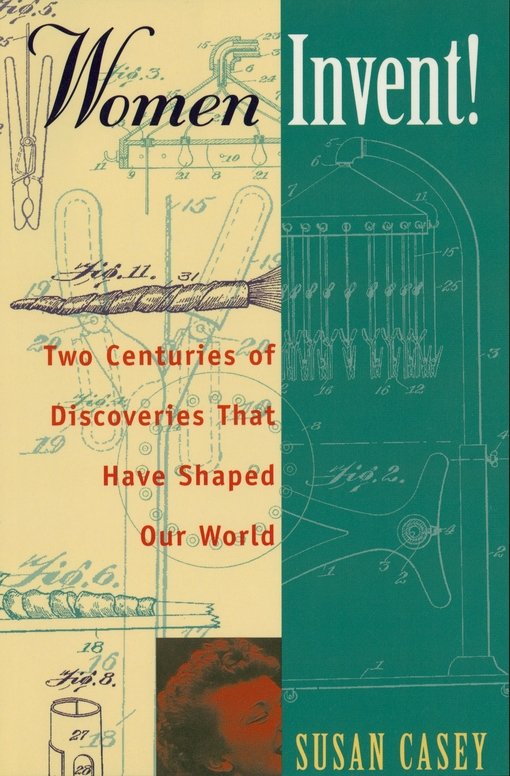
I WOULD LIKE to thank Carolyn See and Dr. Joseph Lifschutz who were both significant in my development as a writer. In the course of writing this book, I received invaluable help and assistance from many people and extend a sincere thank you to all of them. In particular, I want to thank Helen Haskell and Billie Connor of the Los Angeles Public Library Patent Department, Ruth Nyblod of the U.S. Patent and Trademark Office, and patent lawyer Charles Schroeder. I greatly benefitted from the suggestions of several classroom teachers who make invention an integral part of their curriculum: Sue Windham, Nancy Gerardy, Pat Bradel, and Nick Frankovits. Douglas Scharmann, Rachelle Romberg, and Lillian Ross provided extensive and invaluable suggestions. I am also grateful to my young readers, Nicole Hutchinson and Zane Welte, and to their mothers, Pamela Hutchinson and Patsy Casey, for encouraging them to help me.
Thanks also to my friends. Rachel Clarks weekly encouragement helped tremendously. The support of Mary Rose and Stephen OLeary; Susan Brooke; Scotty Embree; Donvieve, Richie, Bob, and Deanna Drake; and Louise and Bernice Sheehy sustained me. And many thanks go to Jimmy and Alma Casey who fed me when I staggered in from the library; to Bill Welte, Mike and Tina Casey, Kevin and Bobbie Casey, and Katie Casey and Russ Anderson for their interest; and to Brian, Jason, Eric, Carlos, Mikie, Nathan, Karissa, and Micah Casey; Carson Welte; and Christine Anderson for being their wonderful selves.
Sincere thanks to my editor, Cynthia Sherry, for her helpful comments and open-mindedness and for her sunny disposition.
Last, but most important, I would like to thank all the inventors, their families, and the companies affiliated with their inventions for their generous cooperation and support.

We still live in a world in which a significant fraction of people, including women, believe that a woman belongsand wants to belongexclusively in the home.... The world cannot afford the loss of the talents of half of its people if we are to solve the many problems which beset us.
Dr. Rosalyn Yalow, Nobel Prize winner, 1977
T he horse trotted at a steady pace, pulling the open carriage. It was a pleasant day in the mid-1880s in Baltimore, Maryland. The family riding in the countryside, especially the mother and father, talked of the birds that flitted about. Their daughter was too busy to chat. She was watching the birds as they flew from branch to branch. Then a loud blast, an explosion, frightened the horse. The little girl turned to look and saw the horse rearsaw its front hooves fly into the air and then down again. The carriage rocked unsteadily. Her mother and father held onto her and the carriage. Then the horse began to run, gallop, too fast, much too fast. The carriage was tipping to one side, then another. The little girl screamed. How were they going to get the carriage free of the runaway horse?
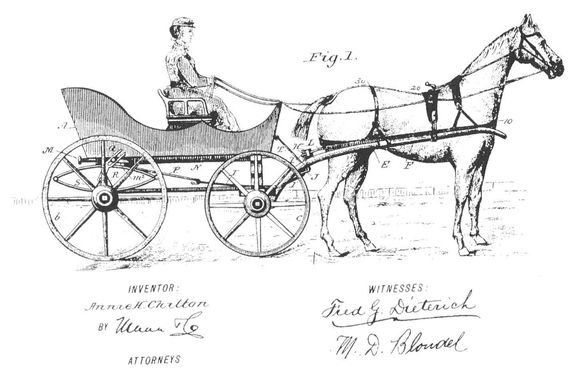
Patent drawing for Annie Chiltons Horse Detacher and Brake.
That was exactly the question Annie Chilton answered when she invented a device that would do just that. In 1891, the Baltimore woman gained a patent for a Horse Detacher and Brake, a device that would prevent accidents like the one about to happen in the story above.
Annie saw a problem that needed to be solved. Then she created a solution with her invention. She is only one of many women inventors, before and after her, who did the same.
So what are inventions, exactly? An invention is a discovery of something new that is useful to people. People might see it and say, Wow, thats great. I could use that. Like what?
In 1976, in another part of the world, Magdalena (Maggie) Villaruz of the Philippines wanted to grow rice in the fields of her farm, but the fields were very wet. Tractors used to cultivate the wet fields got stuck in the mud. That is, until Maggie invented TurtlePower Tillers, a small tractor that can be pushed by hand. It doesnt get stuck in the mud; it floats. She obtained a patent in the United Kingdom and Japan in 1981. She has since gained nineteen other patents for inventions of farming machinery and was awarded the International Federation of Inventors Association Cup as the Most Outstanding Woman Inventor of her country in 1995.
Annie needed a way to stop a runaway horse. Maggie needed to be able to farm in her fields. More than five million inventions have been patented in America, and millions of others have been patented in Canada, Europe, and other areas of the world in the last few hundred years. Inventions by women are included in those millions. Women, like men, have invented what they needed.
Women of the 1800s and early 1900s who lived on farms in America needed harvesting equipment, supplies and equipment for raising livestock and poultry, and tools for planting and tilling. So they invented and patented. Other women received patents for garden tools and equipment. Others invented insecticides to get rid of critters that killed the plants.
Anna Corey Baldwin, the wife of a dairy farmer in New Jersey, received four dairy-related patents in the 1860s and 1870s, including one for cooling milk quickly and one for gloves that promised to help speed up the milking of the cows. In 1887 Hannah Harger of Manchester, Iowa, worried about all the flies that were bothering her babies, invented and gained a patent for the screen door. In 1892, Sarah Boone, an African American woman of New Haven, Connecticut, designed an ironing board that made it easier to iron the sleeves of ladies garments and mens coats. In 1917 May Conner of Garden Grove, Iowa, invented a hay-handling device that used a well-planned system of ropes and pulleys to make it possible to easily transport hay to a storage area. The object of my invention, she wrote in her patent, is for use in stacking hay or moving hay away in a barn... for carrying hay along a stock or barn. Her device was connected to a carriage and to forks used to move the hay.
Decades later, in the 1990s, a much younger woman who lived on a farm thought that the world needed biodegradable containers for fast food. So Disa Rubenbauer, who was in elementary school in Marshalltown, Iowa, created a container for hamburgers and other fast food out of corn products. Because it was winter, the fields on her familys farm were full of corn stalks. Disa and her father gathered some. After Disa ground them up in a blender, she combined the mushy corn stalks with corn syrup, corn oil, corn meal, corn starch, and water. She experimented with the amounts of each ingredient and with how much time the mixture had to be baked. When she finished she had created a container that would hold food and not harm the environment. She received an award from Invent Iowa!, an invention program of Iowa schools.
Years earlier, Amanda Jones was concerned with food, too. She thought there ought to be more ways to preserve it. When Amanda, who was born in 1835, was growing up in upstate New York, she loved the outdoors. And she loved to read. Her parents thought books were important and encouraged her, and her many brothers and sisters, to read. By age fifteen Amanda was a teacher at Buffalo High School. Then her favorite brother died a sudden death. It affected her deeply and led her to an interest in spiritualism, a popular movement of the day. She conducted seances in an attempt to communicate with him and claimed to have a spiritual guide. The guide was the one who prompted her career as an inventor. He suggested that there was a way to can fruit. He left it up to Amanda to figure out the method. In 1872 she came up with the vacuum process of preserving food with the aid of her cousin, Professor Leroy C. Cooley of Albany, New York. Food was placed in a container, the air was drained out, and hot liquid was added to seal it so that it could be stored for future use. Amanda started the Womans Canning and Preserving Company in 1890 to manufacture and sell her canned food. She had plants in several states and advertised her products in national magazines.
Font size:
Interval:
Bookmark:
Similar books «Women Invent!. Two Centuries of Discoveries That Have Shaped Our World»
Look at similar books to Women Invent!. Two Centuries of Discoveries That Have Shaped Our World. We have selected literature similar in name and meaning in the hope of providing readers with more options to find new, interesting, not yet read works.
Discussion, reviews of the book Women Invent!. Two Centuries of Discoveries That Have Shaped Our World and just readers' own opinions. Leave your comments, write what you think about the work, its meaning or the main characters. Specify what exactly you liked and what you didn't like, and why you think so.

